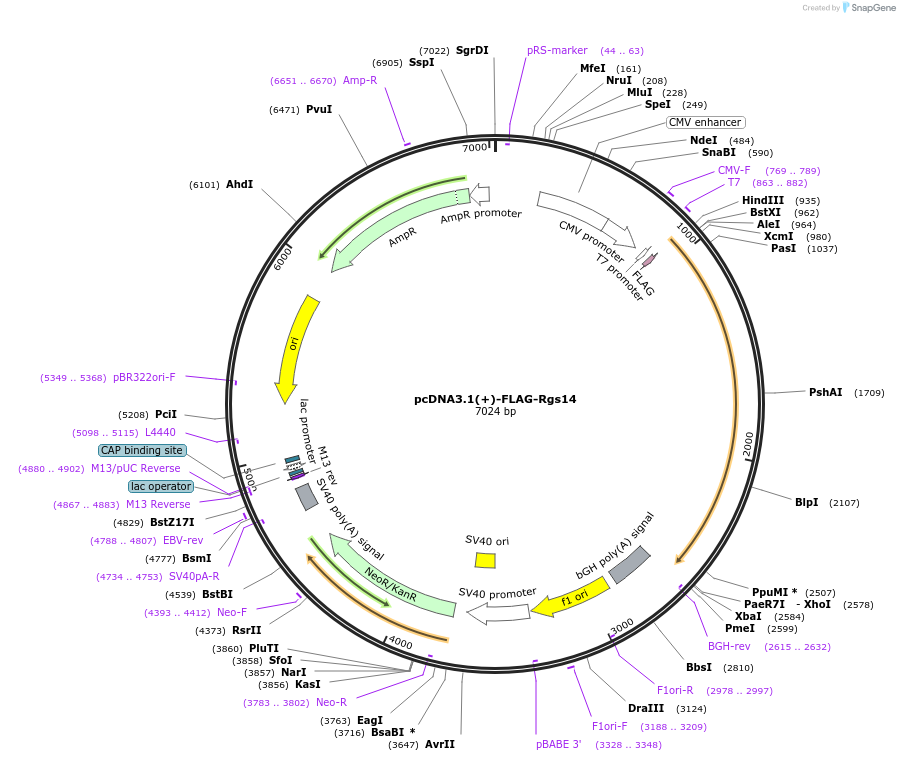pcDNA3.1(+)-FLAG-Rgs14
(Plasmid
#236396)
-
PurposeExpresses FLAG-Rgs14 in mammalian cells
-
Depositing Lab
-
Sequence Information
Ordering
| Item | Catalog # | Description | Quantity | Price (USD) | |
|---|---|---|---|---|---|
| Plasmid | 236396 | Standard format: Plasmid sent in bacteria as agar stab | 1 | $89 | |
Backbone
-
Vector backbonepcDNA3.1+
-
Backbone manufacturerThermo Fisher (Invitrogen)
-
Vector typeMammalian Expression
Growth in Bacteria
-
Bacterial Resistance(s)Ampicillin, 100 μg/mL
-
Growth Temperature37°C
-
Growth Strain(s)DH5alpha
-
Copy numberUnknown
Gene/Insert
-
Gene/Insert nameRattus norvegicus regulator of G-protein signaling 14
-
Alt nameRgs14
-
SpeciesR. norvegicus (rat)
-
GenBank IDU92279.1
-
Entrez GeneRgs14
-
Tag
/ Fusion Protein
- FLAG (N terminal on insert)
Resource Information
-
A portion of this plasmid was derived from a plasmid made byD.P. Siderovski (REF: B E Snow, L Antonio, S Suggs, H B Gutstein, D P Siderovski (1997) Molecular cloning and expression analysis of rat Rgs12 and Rgs14. Biochem Biophys Res Commun. Apr 28;233(3):770-7. doi: 10.1006/bbrc.1997.6537. PMID: 9168931)
Terms and Licenses
-
Academic/Nonprofit Terms
-
Industry Terms
- Not Available to Industry
Trademarks:
- Zeocin® is an InvivoGen trademark.
These plasmids were created by your colleagues. Please acknowledge the Principal Investigator, cite the article in which the plasmids were described, and include Addgene in the Materials and Methods of your future publications.
-
For your Materials & Methods section:
pcDNA3.1(+)-FLAG-Rgs14 was a gift from John Hepler (Addgene plasmid # 236396 ; http://n2t.net/addgene:236396 ; RRID:Addgene_236396) -
For your References section:
Selective interactions between Gi alpha1 and Gi alpha3 and the GoLoco/GPR domain of RGS14 influence its dynamic subcellular localization. Shu FJ, Ramineni S, Amyot W, Hepler JR. Cell Signal. 2007 Jan;19(1):163-76. doi: 10.1016/j.cellsig.2006.06.002. Epub 2006 Jul 25. 10.1016/j.cellsig.2006.06.002 PubMed 16870394



